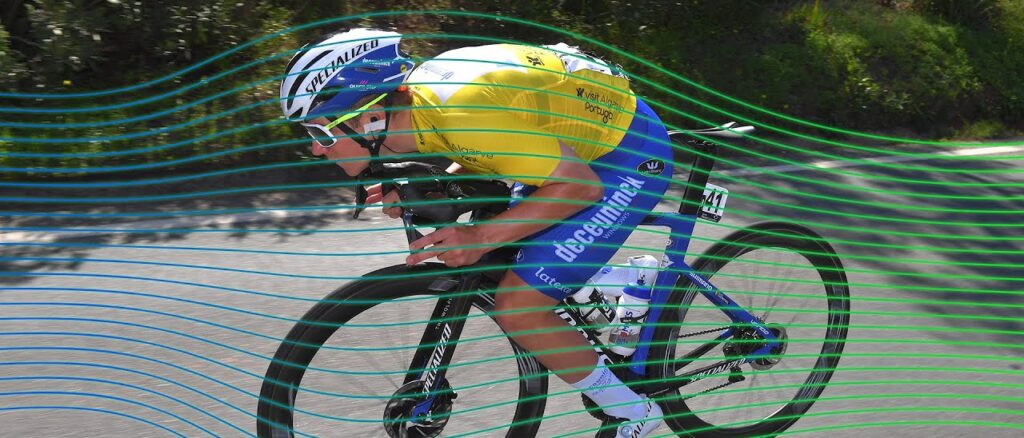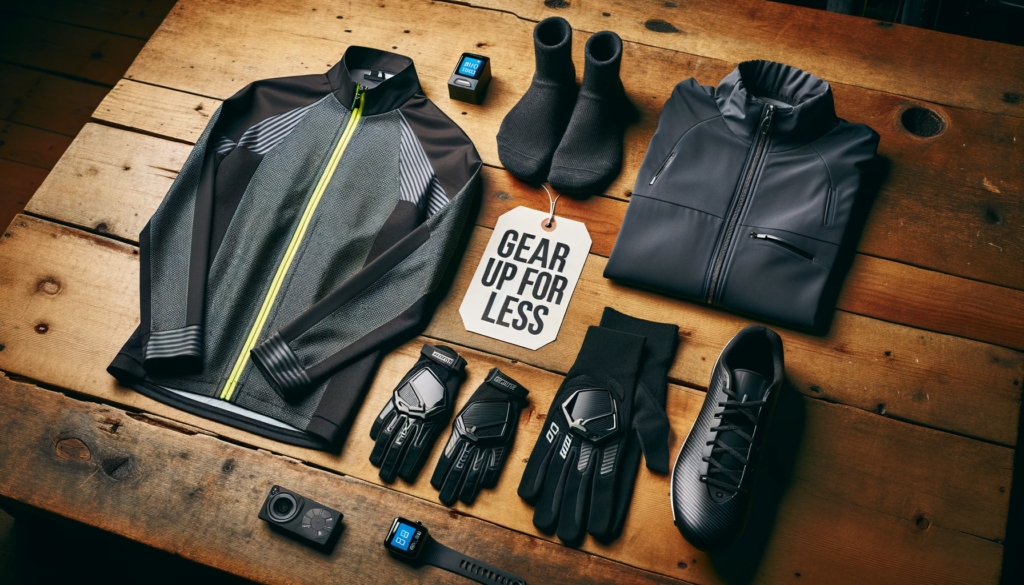A bicycle can reach speeds of up to 50 to 60 miles per hour downhill. Downhill cycling allows bicycles to achieve speeds of 50 to 60 miles per hour, making it an exhilarating and thrilling experience for riders.
The force of gravity, combined with the rider’s effort and aerodynamics, contributes to the high speeds achieved on downhill slopes. However, it is important to note that these speeds can vary depending on factors such as the terrain, wind conditions, the skill and technique of the rider, and the quality and condition of the bicycle.
Downhill cycling requires skill, control, and proper safety equipment to ensure a safe and enjoyable ride. Riders must be aware of their surroundings, use appropriate braking techniques, and adhere to speed limits to prevent accidents and maintain control on downhill descents.

Credit: www.cyclist.co.uk
Factors Affecting The Speed Of Bicycles Downhill
When it comes to zooming down a hill on a bicycle, the speed at which you can reach is influenced by various factors. Understanding these factors can help you optimize your downhill cycling experience. In this blog post, we will discuss three primary factors that significantly affect the speed of bicycles downhill: gravity and incline, weight and aerodynamics, and road conditions and braking. Let’s delve into each of these factors below:
Gravity And Incline
Gravity plays a crucial role in determining how fast a bicycle can travel downhill. As we all know, gravity is a force that pulls objects towards the center of the Earth. When you cycle downhill, gravity acts as your main accelerator, propelling you forward. The steeper the incline, the greater the gravitational force, resulting in increased speed. On the other hand, a gentle slope may not provide enough gravitational force to achieve high speeds.
Weight And Aerodynamics
While gravity helps propel your bicycle downhill, weight and aerodynamics can either assist or hinder your speed. The weight of the rider and the bicycle affects the overall momentum. A lighter bike and rider combination can reach higher speeds due to the reduced mass. Additionally, aerodynamics also play a crucial role in reducing wind resistance and improving speed. A streamlined posture, tucked in elbows, and minimizing frontal surface area can enhance the aerodynamic efficiency, allowing you to go faster.
Road Conditions And Braking
The quality and conditions of the road surface can have a significant impact on your downhill speed. Smooth and well-paved roads offer less rolling resistance, allowing you to maintain higher speeds. In contrast, rough or uneven road surfaces can hinder your speed due to increased friction. Additionally, maintaining proper braking technique is crucial for downhill cycling. Effective braking can help you control your speed and navigate turns safely, preventing accidents or loss of control.
To conclude, when it comes to reaching high speeds on a bicycle downhill, various factors come into play. Gravity and incline determine the initial acceleration, while weight and aerodynamics influence the overall momentum. Road conditions and braking techniques also play a crucial role in maintaining control and safety. By understanding and optimizing these factors, you can enhance your downhill cycling experience and enjoy the thrill of speed.
Speed Records And Limitations
When it comes to the exhilarating experience of cycling downhill, speed is one of the most thrilling aspects. Pushing the limits of gravity, cyclists have been able to achieve astonishing speeds on their bicycles, setting records that leave us in awe. However, there are certain factors that can limit the speed at which a bicycle can go downhill. In this section, we will explore the current speed record achieved by cyclists, the various factors that can restrain speed, and the potential future possibilities for pushing these limitations even further.
Current Speed Record
The current speed record for cycling downhill on a bicycle was set by Eric Barone, a French cyclist known as “The Baron.” In 2015, he reached an unbelievable speed of 223.30 kilometers per hour (138.75 miles per hour) on the snow-capped slopes of Vars in the French Alps. This incredible accomplishment showcases the immense capabilities of both the cyclist and the bike.
Factors Limiting Speed
Despite the impressive speeds achieved by cyclists, several factors impose limitations on how fast a bicycle can go downhill. These factors include:
- Wind resistance: As the cyclist gains speed, wind resistance becomes a significant factor. The force exerted by the wind increases exponentially, making it increasingly challenging to maintain high speeds.
- Terrain and road conditions: The surface condition and steepness of the road can affect the speed achievable. Uneven or slippery surfaces can make it difficult to maintain control and momentum.
- Bike design and stability: The design and stability of the bike itself play a crucial role in determining the maximum speed. Factors such as weight distribution, aerodynamics, and the quality of components can impact the speed potential.
- Rider’s skill and experience: The rider’s level of skill and experience in handling high speeds also plays a pivotal role in achieving and maintaining maximum velocity. Proper technique, balance, and control are essential for pushing the limits.
Future Possibilities
The pursuit of speed is an ongoing endeavor for cyclists, and as technology and expertise continue to advance, it is only natural to wonder about future possibilities for achieving even greater speeds downhill. Some potential avenues to explore include:
- Improved bike materials and technology: Advances in bike materials, frame design, and component technology could enhance the speed potential of bicycles.
- Optimized aerodynamics: Further understanding and refinement of aerodynamics could lead to bikes that are even sleeker and more resistant to wind drag.
- Training and technique: As cyclists continue to refine their skills and gain experience, they may discover new techniques or training methods that allow them to reach extraordinary speeds.
While pushing the limitations of downhill cycling speed will always come with certain risks and challenges, the pursuit of breaking records and surpassing expectations remains a captivating endeavor for both cyclists and enthusiasts alike. With each new achievement, we are reminded of the boundless potential of human ingenuity and determination. Who knows what future speed records await?

Credit: texastailwind.wordpress.com
Safety Measures And Precautions
When it comes to riding a bicycle downhill, safety should always be a top priority. The increase in speed and potential risks make it crucial to take appropriate safety measures and precautions before embarking on an exhilarating downhill adventure. This section will highlight the importance of protective gear, maintenance and inspections, and risk management.
Protective Gear
Wearing the right protective gear can significantly reduce the severity of injuries in case of accidents. It’s essential to choose gear that provides optimal safety without compromising comfort. Here are some protective gear items to consider:
- Helmet: A well-fitted helmet is paramount to protect your head in case of a fall or collision. Ensure your helmet meets safety standards and replace it if it has been involved in an accident.
- Gloves: Cycling gloves offer grip and padding, preventing hand fatigue and providing an additional layer of protection in case of falls.
- Elbow and Knee Pads: These protective pads are crucial for safeguarding your joints during potential spills or crashes.
- Protective Clothing: Opt for clothing that is abrasion-resistant and provides visibility to other road users. Reflective elements and bright colors can enhance your visibility on the road.
Maintenance And Inspections
Prioritizing proper maintenance and regular inspections of your bicycle is vital for downhill riding safety. Here are some key maintenance tasks and inspections to consider:
- Brakes: Ensure your brakes are in optimal condition and provide the necessary stopping power. Check brake pads for wear and tear and replace them if needed.
- Tires: Examine the tires for any signs of damage or excessive wear. Proper tire inflation is crucial for maintaining control and reducing the risk of blowouts during downhill descents.
- Chain and Gears: Lubricate the chain regularly and inspect the gears for smooth shifting. A well-maintained drivetrain ensures efficient power transfer and helps prevent unexpected gear failures.
- Suspension: If your bicycle is equipped with suspension, ensure it is properly adjusted and functioning correctly. Suspension is crucial for absorbing vibrations and maintaining stability at high speeds.
Risk Management
While riding downhill, it is essential to prioritize risk management to minimize potential hazards. Here are a few measures to consider:
- Scout the Route: Familiarize yourself with the route before attempting downhill descents. Check for any obstacles, road conditions, or blind spots that may pose risks.
- Monitor Speed: Maintain a reasonable speed that allows you to retain control and react to unexpected situations. Always be cautious and reduce speed if necessary.
- Signal Your Intentions: Use hand signals to communicate with other road users and ensure they are aware of your movements. Be predictable and give clear indications of your actions.
- Keep a Safe Distance: Maintain a safe distance from other riders and vehicles to allow enough reaction time in case of emergencies.
By adhering to these safety measures and taking necessary precautions, you can enjoy the thrill of downhill riding while minimizing the risks involved. Remember, safety should never be compromised when embarking on any cycling adventure.
Frequently Asked Questions Of How Fast Can A Bicycle Go Downhill
How Fast Can A Bicycle Go Downhill?
A bicycle can reach speeds of up to 60 miles per hour when going downhill, depending on factors like the terrain and rider’s skill.
What Is The Fastest Downhill Speed Ever Recorded On A Bicycle?
The fastest recorded downhill speed on a bicycle is an incredible 167. 6 miles per hour, achieved by Eric Barone in 2015.
Are There Any Safety Precautions To Take When Cycling Downhill?
Absolutely! It’s important to wear a helmet and protective gear, have well-maintained brakes, and maintain a stable speed and control while descending.
Can Anyone Achieve High Speeds On A Downhill Descent?
While anyone can reach high speeds going downhill, it’s crucial to have proper safety training, experience, and confidence to handle such velocities.
What Factors Contribute To Reaching High Speeds On A Bicycle Downhill?
Factors like aerodynamics, road conditions, bike design, wind direction, and gravity all have an impact on a cyclist’s speed while going downhill.
Conclusion
To sum it up, the speed at which a bicycle can go downhill varies depending on various factors, including the cyclist’s skill level, terrain conditions, aerodynamics, and the type of bike. However, professional cyclists have reached incredible speeds of over 60 miles per hour while descending.
It is important to always prioritize safety while enjoying the exhilarating experience of downhill cycling. So, whether you’re an amateur or a pro, remember to ride responsibly and stay within your limits. Happy cycling!




